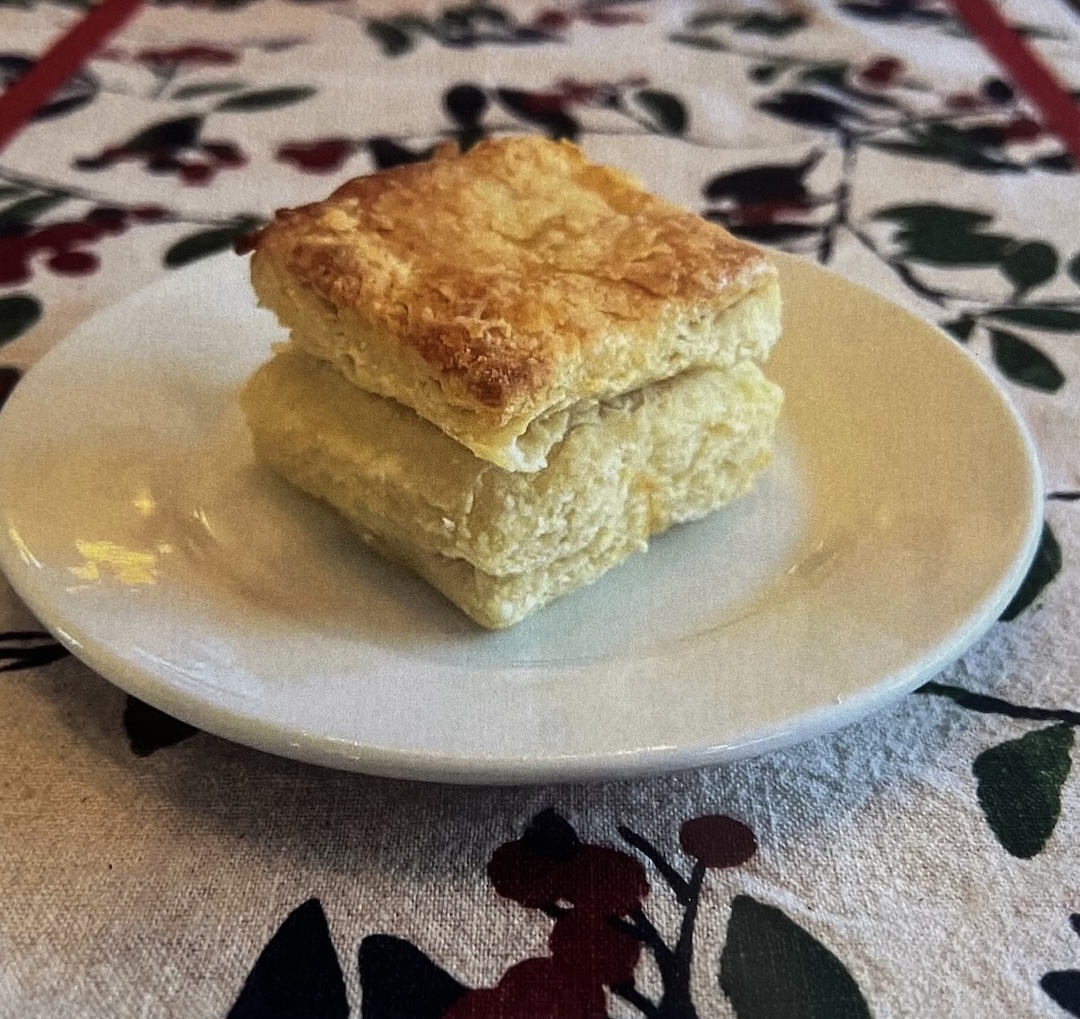By Christina Autry
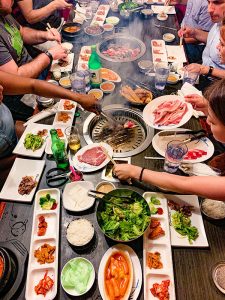 Gathered around a smoking hot grill, tongs in hand, and surrounded by tiny, colorful plates of fresh and fermented flavors is where the Korean BBQ experience begins. Before you darken the door of Korea House in Spring Branch, make sure that you are accompanied by at least three exceptionally hungry friends. What you are about to engage in is a shared, all-you-can-eat feast, cooked and enjoyed entirely by you and your group.
Gathered around a smoking hot grill, tongs in hand, and surrounded by tiny, colorful plates of fresh and fermented flavors is where the Korean BBQ experience begins. Before you darken the door of Korea House in Spring Branch, make sure that you are accompanied by at least three exceptionally hungry friends. What you are about to engage in is a shared, all-you-can-eat feast, cooked and enjoyed entirely by you and your group.
From the heavy wooden doors pulled open to enter the restaurant, to the stacks of onggi earthenware pots traditionally used to ferment kimchi, Korea House invites guests into an ambiance of old-world Korea. You will quickly notice the shelves lit with neon blue lights and lined with Korean dolls dressed in traditional and ceremonial outfits, with some silently playing gayageum, a 12-string wooden instrument laid flat across the lap. Two dolls enthusiastically play janggu drums without a sound, while other dolls dance, motionless, as if to welcome you into the restaurant.
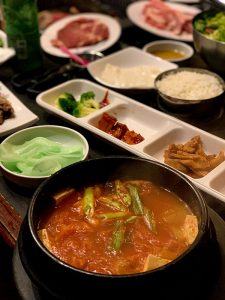 When my seven hungry friends and I set our sights on Korea House one night, we were seated in our own small room, around a table with two built-in grills. As it was our first time there, we muddled through a menu of individual plates before realizing that the real, all-you-can-eat menu cards are already available on the table. For the sake of sharing, our entire party was instructed to pick one of three menus; either: “A” (the most expensive cuts of meat), “B” (middle-priced), or “C” (the cheapest).
When my seven hungry friends and I set our sights on Korea House one night, we were seated in our own small room, around a table with two built-in grills. As it was our first time there, we muddled through a menu of individual plates before realizing that the real, all-you-can-eat menu cards are already available on the table. For the sake of sharing, our entire party was instructed to pick one of three menus; either: “A” (the most expensive cuts of meat), “B” (middle-priced), or “C” (the cheapest).
We settled on “B,” which offered a possibility of ordering twenty different types of meat, plus tempura and rice cake appetizers. We were free to order as much as we wanted of any of the meats pictured. Overcome with anticipation, we started off with requesting bulgogi, the traditional marinated beef strips, chadolbaegi, a thin-sliced brisket, and saengsamgyupsal, a thin-sliced fresh pork belly. The dwaejigalbi pork ribs and the ojinguhgui marinated squid came later, while other meats such as the fried chicken were saved for future visits.
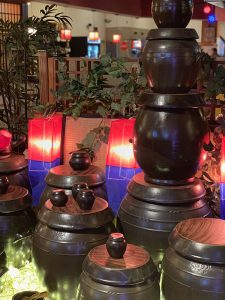 Our grills were switched on, and almost immediately our small side dishes, banchan, started populating on our table. Plates of kimchi, the fermented cabbage that no Korean restaurant would do without, the eomuk bokkeum, fried fish cakes, and delights that we had never tried before, like gamja bokkeum potatoes shared the little space left on the table. Larger sides of orange tteokbokki, stir-fried rice cakes shaped like cylinders, and pots of kimchi jjigae soup squeezed in, adding even more variety to our diverse spread.
Our grills were switched on, and almost immediately our small side dishes, banchan, started populating on our table. Plates of kimchi, the fermented cabbage that no Korean restaurant would do without, the eomuk bokkeum, fried fish cakes, and delights that we had never tried before, like gamja bokkeum potatoes shared the little space left on the table. Larger sides of orange tteokbokki, stir-fried rice cakes shaped like cylinders, and pots of kimchi jjigae soup squeezed in, adding even more variety to our diverse spread.
It is handy to have a friend with you who knows how long each strip of meat should cook on each side, achieving the balance of being cooked, while still tender. It is even better if you have a friend from Korea accompany you, as we did, who can direct the table according to the correct methods of cooking and consuming this meal. One of those methods was to pair your dinner with Soju, Korea’s homegrown rice drink that ranks between wine and liquor in terms of strength.
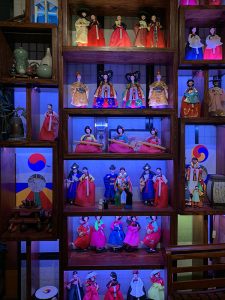 As a Texan who’s eaten my share of Mexican food, the concept of wrapping up the grilled meat inside the thinly sliced pickled radish (ssammu), or the thin-sliced rice wrap (tteokssam) resonated with me. We stuffed the strips of tender meat and other tidbits into the lightly sour wraps for a bite full of contrasting flavors. Gireumjang and ssamjang dips consisting of sesame oil, sugar, onions and garlic are readily available for dipping if you want to add a little tang each bite.
As a Texan who’s eaten my share of Mexican food, the concept of wrapping up the grilled meat inside the thinly sliced pickled radish (ssammu), or the thin-sliced rice wrap (tteokssam) resonated with me. We stuffed the strips of tender meat and other tidbits into the lightly sour wraps for a bite full of contrasting flavors. Gireumjang and ssamjang dips consisting of sesame oil, sugar, onions and garlic are readily available for dipping if you want to add a little tang each bite.
Meat continues to arrive, the stovetop fire burns, and the happiness of enjoying Korean BBQ among friends seems limitless. But once your stomach has reached its limits of all-it-can-eat, your banchan plates are clean, and your grill is finally switched off, you and your no longer hungry friends can sit back, satisfied with having experienced one of the most authentic Korean meals to be had in Spring Branch, and all of Houston.
Korea House
10078 Long Point Rd
Houston, TX 77055
713.465.6400
https://snskoreahousehoust.wixsite.com/home

